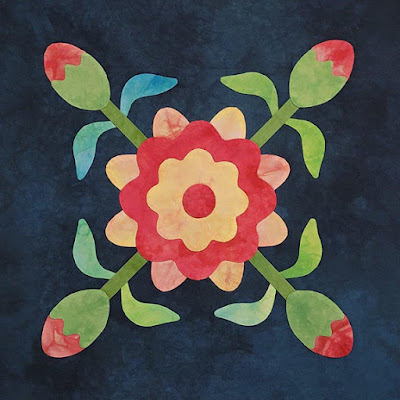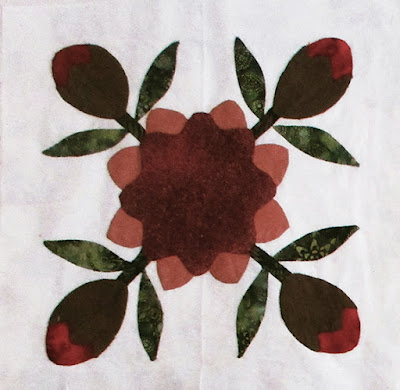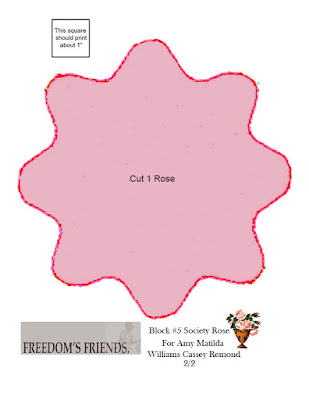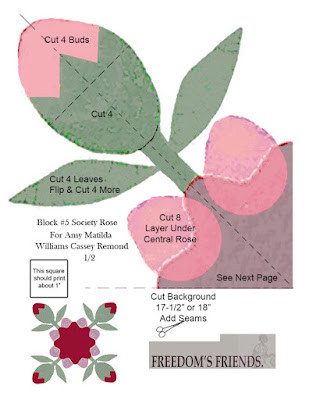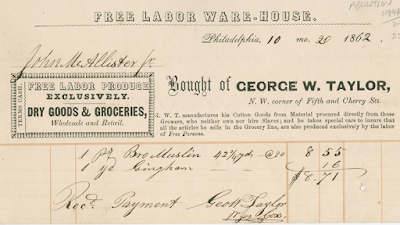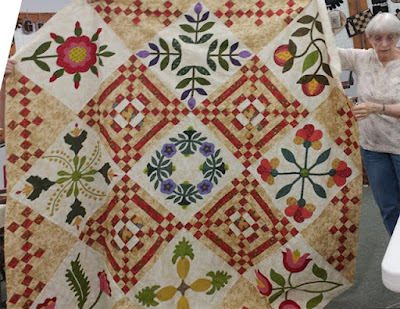Saturday, July 30, 2022
1903 "Patriotic Quilt"
Wednesday, July 27, 2022
Freedom's Friends #5 Amy Cassey Remond & Society Rose
Amy Matilda was "the loveliest of women," according to Charlotte Forten who boarded with the Remonds in Salem from 1853 to 1856. Lottie was adopted daughter Annie Wood's niece, a smart fifteen-year-old who wanted a good education, something Philadelphia schools did not offer Black children. But Salem's activists had managed to mandate integrated schools and Charlotte boarded with the Remonds where she felt quite at home. Her diary is our best account of Amy Matilda, Charlotte's well-loved substitute mother, "the best and kindest of friends to me."
Sorry I forgot the pattern but here it is in 2 sheets.
http://stillfamily.library.temple.edu/items/show/188" I purchased within the last 3 or 4 weeks 2 three/ story brick houses on Lombard above 4th St. This property was formerly owned by Jos. Cassey (the father of the Cassey’s) who lived & died there. The house that he lived in is a very nice house & just about the kind of a one I have been hunting for, yet I am not as yet inclined to go there to live. That part of Lombard St. is pretty genteel & quiet, you know, but still I have some prejudices against Lombard St. and may hesitate for sometime before consenting to move there. I bought the property at Sheriff Sale and got it quite cheap or I should not have bought it of course."
Saturday, July 23, 2022
Lydia White & Her Free Produce Store
She maintained a "Free-Labor Store" in the vicinity of 5th & Cherry Streets from 1830 through 1846. Working with fellow Hicksite Quakers she endeavored to find free-labor cottons, sell them as cheaply as possible and convince her fellow anti-slavery activists that it was worth paying a little more for goods produced by requited labor (as they called it.)
In 1831 Lydia politely complained about the difficulties in her new business plan to William Garrison, editor of The Liberator, who'd ordered some goods:
"We are very sorry it is not in our power to furnish thee with the articles written for it as truly mortifying to have to say that we have not enough of either of the articles on hand at present worth sending Have been repeatedly disappointed in getting goods manufactured, but do not wish to blame the manufacturers believing the fault lay with us (more particularly the citizens of Phila) whose minds are happily so far [un]enlightened on this deeply interesting subject as to give a decided preference to free labour produce."
"Are daily expecting wadding and Knitting Cotton....The quality of the cotton purchased last spring will not do to make fine shirtings or sewing cotton. A person has commenced weaving some of it on power loom for sheeting and if we find the price will answer intend employing him to weave other goods of such textures as the cotton will admit."
Business improved in the 1840s as Friends sought more free-labor goods to sell and formed the American Free Produce Association that maintained a Free Labor Ware-House.
1862
"Lydia White...advertised ginghams, canton flannel, and muslin in several qualities, table diaper, bird eye towels, buff pantaloon stripes, cotton batting, bed-ticking, calicoes, stockings, knitting cotton, lampwicks, and other articles. Most...made from one thousand dollars worth of 'free Texas cotton' which the Association received at the end of 1841. Early in 1843 business had improved so that they were able to reduce prices 10 per cent."Henry J. Cadbury, "The Free Produce Movement: A Quaker Protest Against Slavery," Bulletin of Friends' Historical Association, Spring, 1943.
"We have removed our free labour dry goods No 42 North fourth St and bound with our kind friends Joseph Sharpless and wife, find the change very agreeable They and their daughter Mary with my partner Leah Gell wish to be affectionately remembered to thee."
In 1846, nearing sixty, she sold her store to Joel Fisher.
Lucretia Mott's granddaughter Anna D. Hollowell recalled shopping at the free labor stores when she was a child. Quality was an issue for children too.
" 'Free calicoes could seldom be called handsome; free umbrellas were hideous and free candies an abomination. (I have with me a free umbrella and a pocket made of nankeen cotton, free and high priced....Children...preferred good candy to consistent convictions.") Anna D. Hollowell paper published in the Medford Historical Register in 1909Read Anna Hallowell's memoir online here:
https://www.google.com/books/edition/The_Medford_Historical_Register/oncNAQAAIAAJ?hl=en&gbpv=1&bsq=hallowell
Posts on Free Produce
http://civilwarquilts.blogspot.com/2017/05/free-labor-fabrics-few-quaker-quilts.html
http://civilwarquilts.blogspot.com/2016/09/lucretia-coffin-motts-quilt.htmlWednesday, July 20, 2022
Hospital Sketches Exhibit Opens Today
It's certainly rewarding to see how many of you stitched the pattern and what a fascinating variety of individual looks you achieved.
I hope you can get to Lowell, Massachusetts to see the show between now and October 1st.
https://www.neqm.org/on-view-index







